- What Are Guitar Plugins?
- What are the Best Guitar Plugins Available?
- Pros of Guitar Plugins
- Cons of Guitar Plugins
When the recording industry transitioned from analogue tape mediums to digital software platforms at the turn of the millennia, physical hardware became less essential for music production. Although not entirely phased out, the emergence of software plugins caused a steady decline in the need for studio outboard, as they could emulate real-life equipment in near-authentic detail.
For the last two decades, plugins have allowed musicians to easily record and produce music from just their laptops, usually with excellent results. And as guitarists, we’ve therefore never been more fortunate. That’s because plugins aren’t limited to just imitating traditional studio outboard like compressors, equalisers or reverbs; they can emulate guitar amps too.
Instead of the handful of passable-sounding guitar plugins that were available in the mid-2000s, today there’s loads of different amp and effects plugins out there that are tailored just for us. Let’s take a closer look at how these work and identify some of the key players.
What Are Guitar Plugins?
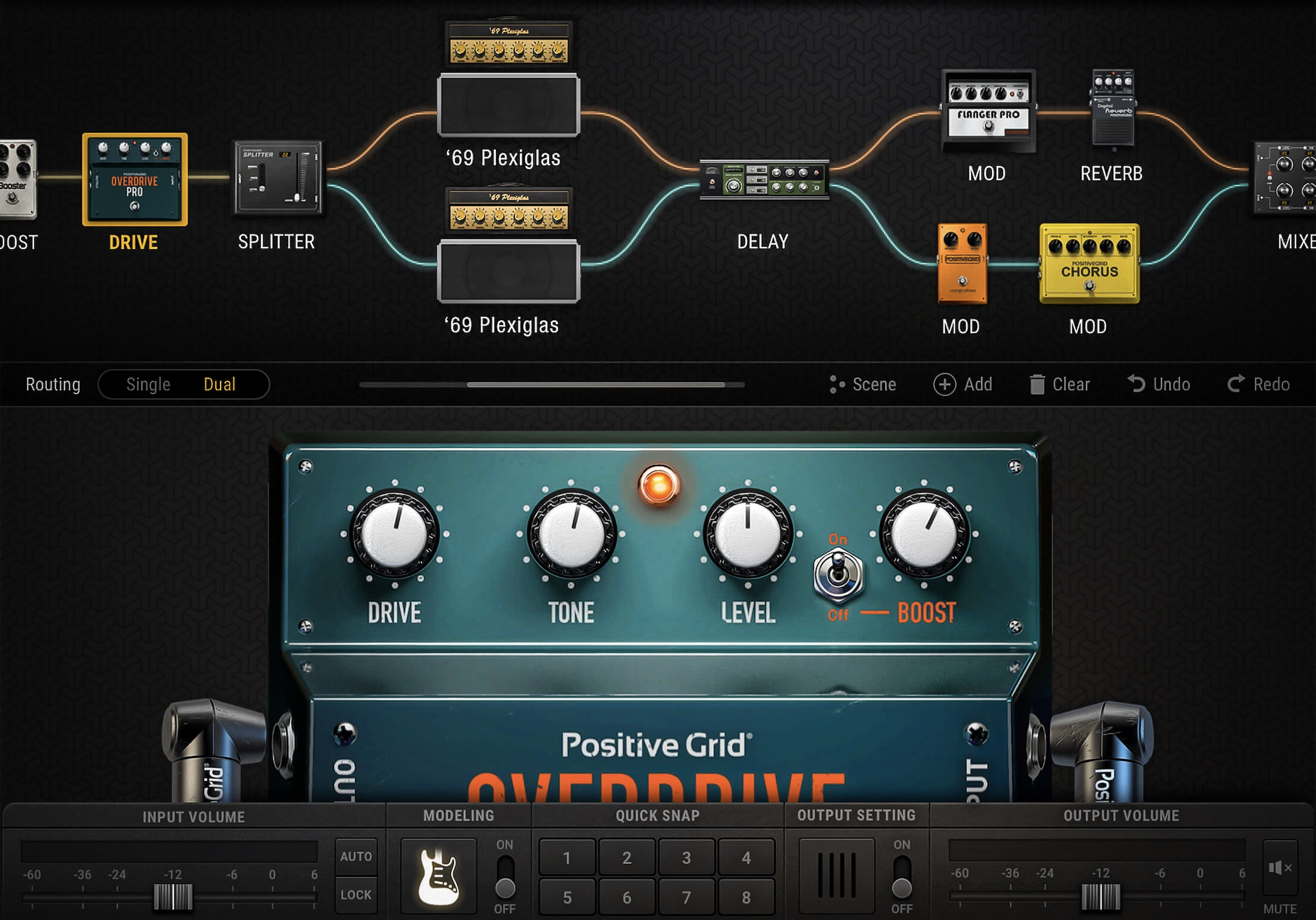
Guitar plugins are often classed as ‘VST’ plugins. VST stands for ‘Virtual Studio Technology’ and refers to audio plugins that use digital signal processing to simulate hardware. This technology has grown exponentially, with a VST plugin available for almost any musician’s needs.
Anything from simulations of legendary microphones to treasured SSL preamps are available, and the ability to harness the sounds of desirable musical equipment has never been simpler. One of the best things about VST plugins is that they cost just a mere fraction of the prices of their real-life counterparts, which has made recording far more accessible.
How Do You Record With Guitar Plugins?
Plugins can only be used if you have DAW (Digital Audio Workstation) recording software, like Logic, Cubase or Pro Tools. DAWs are able to host plugins, of which can be applied to virtual channel strips. You’ll find that most guitar plugins are compatible with these popular software titles as they can support 3rd-party products.
You’ll also require an audio interface; a device that connects to your computer via USB or Thunderbolt. With an audio interface, you can easily plug in your guitar with a standard jack-to-jack cable and set its input level. You can also hook up a pair of studio monitors to most standard audio interfaces.
What Are Guitar Plugins Able To Do?
Most guitar-specific plugins are designed to emulate the tonal characteristics of a range of iconic amplifiers. A lot of the amps that they capture the essence of are unattainable to most, as many are so expensive in real life. Giving you access to a whole palette of different sounds, these plugins have tonnes of flexibility with lots of additional features too.
For example, you can A/B a raft of different guitar cabs against your favourite amp head, to find the optimal tone. More advanced plugins also let you change out virtual microphones, and you can even adjust their positions against a speaker cab if you’re really fastidious!
The majority of these VST plugins feature libraries of emulated guitar pedals too. If you want to embellish a clean tone with some chorus or attain a gnarly fuzz sound, you can use these stompboxes in conjunction with your emulated amp of choice. Ultimately, this lets you setup your own custom signal chain.
What are the Best Guitar Plugins Available?
While there were just a handful of guitar plugins available a few years ago, today there’s loads of options on the market. In fact, there are quite a few packages that can be downloaded for free, or at least some free trials that companies offer of their flagship software. Let’s take a look at some of the big-hitters.
IK Multimedia Amplitube

The first guitar amp plugin to really gain momentum was IK Multimedia‘s Amplitube, first released in 2002. Now in its 4th iteration, Amplitube models a range of amplifiers, cabinets, speakers and effects; letting you set up the entire signal chain from instrument to recording device. It’s worth mentioning that unlike some titles, Amplitube can imitate a range of licensed amps, from the likes of Fender, Orange, Mesa/Boogie and more.
The diagram below shows just how many stages of Amplitube’s virtual chain you can experiment with and adjust. With the ability to even set up a parallel rig, whereby effects and two virtual amps/cabs can be split and used together to create blended, stereo tones; Amplitube will satisfy true audiophiles.

Amplitube is one of the more aesthetically-pleasing and user-friendly guitar plugins around. With inspiring 3D graphics for its ‘Cab Room’ feature, there’s an extra sense of realism that comes with this software. On the subject of the Cab Room, this intuitive part of the version 4 software lets you customise your cabinet setup in incredible detail. With the ability to swap out speakers and adjust their sizes, you can also choose from a library of different microphones and play around with their placement like a bonafide recording engineer.
Perhaps more significantly, you can change the virtual recording room too. This lets you achieve different types of ambience, with studio spaces like ‘Big Live Room’ and ‘Booth’ available, as well as niche environments like ‘Garage’ and ‘Venue’. A mixer section allows you to balance the room sound with the speaker mics and direct amp signal, for professional-grade levels of tweakability.
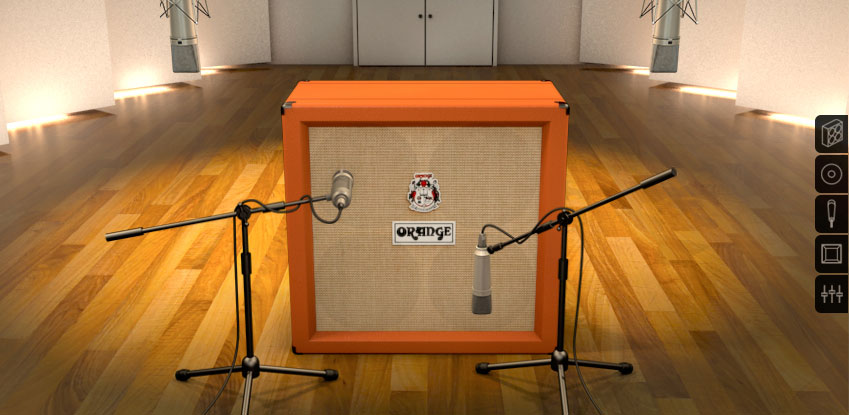
For capturing and developing ideas, Amplitube features a simple built-in 8-track DAW. With a basic 3-band EQ for each channel, as well as pan and level controls; this under-the-radar feature can also be used as a great practice tool. With the ability to import audio tracks, you can employ Amplitube’s speed and pitch controls to slow down and change the key of songs that you’re keen to learn.
If you really want to get the most out of Amplitube though, IK Multimedia’s new AXE I/O audio interface is made specifically for supporting the plugin and guitarists in general. Featuring a built-in tuner, a preset control for switching patches in Amplitube, an amp-out for re-amping with real amplifiers and a ‘Z-Tone’ impedance-adapting circuit that interacts with your guitar’s pickups for extra tonal flexibility; the AXE I/O is a fantastic hardware companion for Amplitube.
Positive Grid BIAS

Positive Grid‘s BIAS Amp and FX plugins are more modern pieces of software, which have challenged the likes of Amplitube in recent years. Synonymous particularly with metal players, BIAS boasts a vast library of amp, cab and pedal models, and versatility is certainly its strong-point.
Although its default models are excellent, the BIAS Amp plugin is particularly acclaimed for its ‘Amp Match’ capabilities. With this technology, you can mic up and record a real amp through your audio interface, while the software identifies and captures the qualities of its sound. This is similar to what Kemper Profiling amps can do, and you can even recreate the sound of an isolated guitar recording from your favourite guitarist or band.
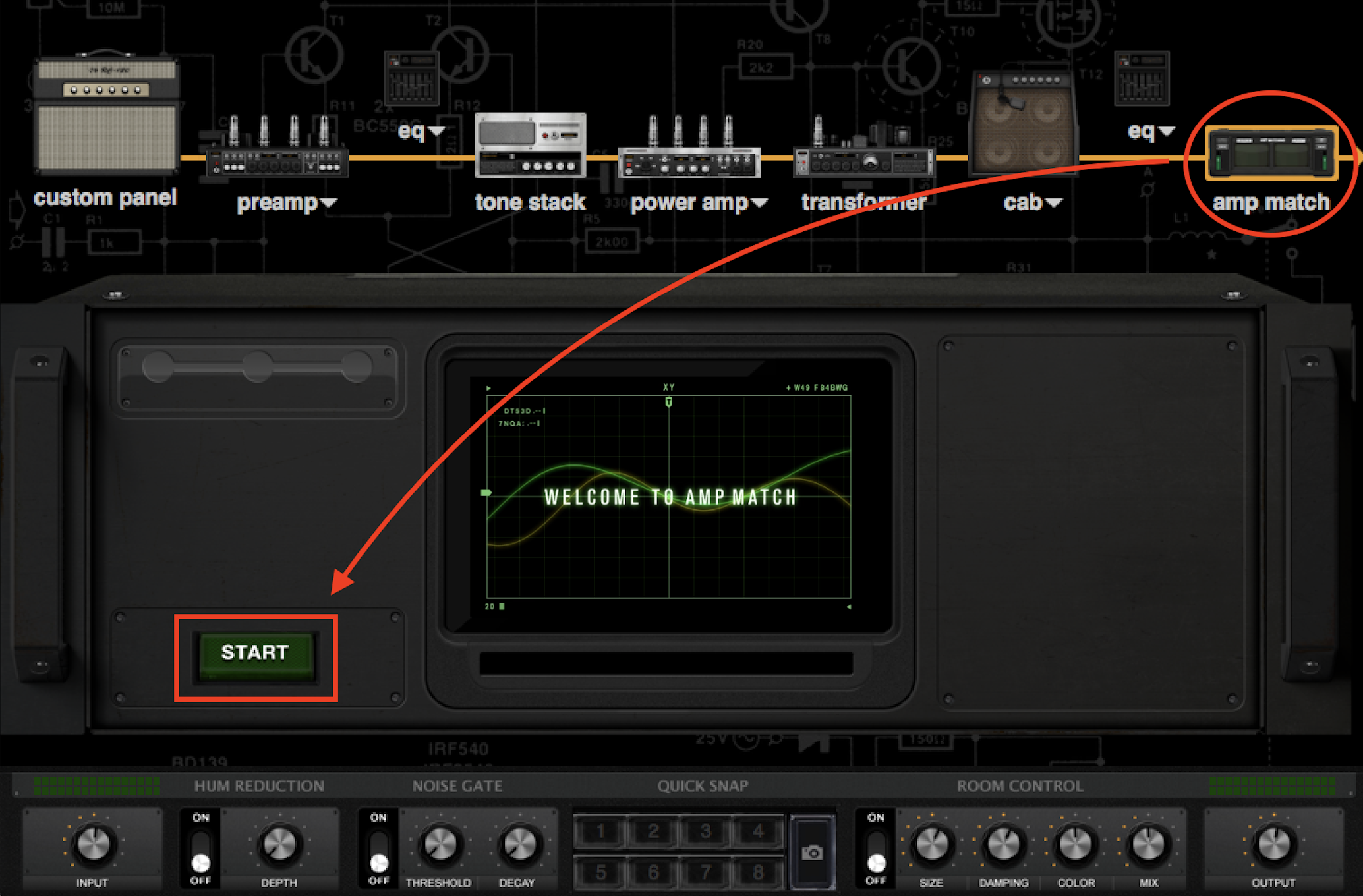
As you’d expect, your captured tones can be saved as custom presets with the ability to tweak and recall them at any time. The great thing about this feature is that you can share your patches with other users via Positive Grid’s online community; ‘ToneCloud’. You can also download from over 50,000 presets created by Positive Grid themselves, or other eager tone-chasers.
In its latest update for BIAS FX, Positive Grid innovated a ‘Guitar Match’ function too. If you want to make your instrument sound like a Les Paul, Strat or a Tele for instance, the precisely-tuned emulations make that very possible. Ultimately, this was designed to remove the need for swapping out guitars in the studio.
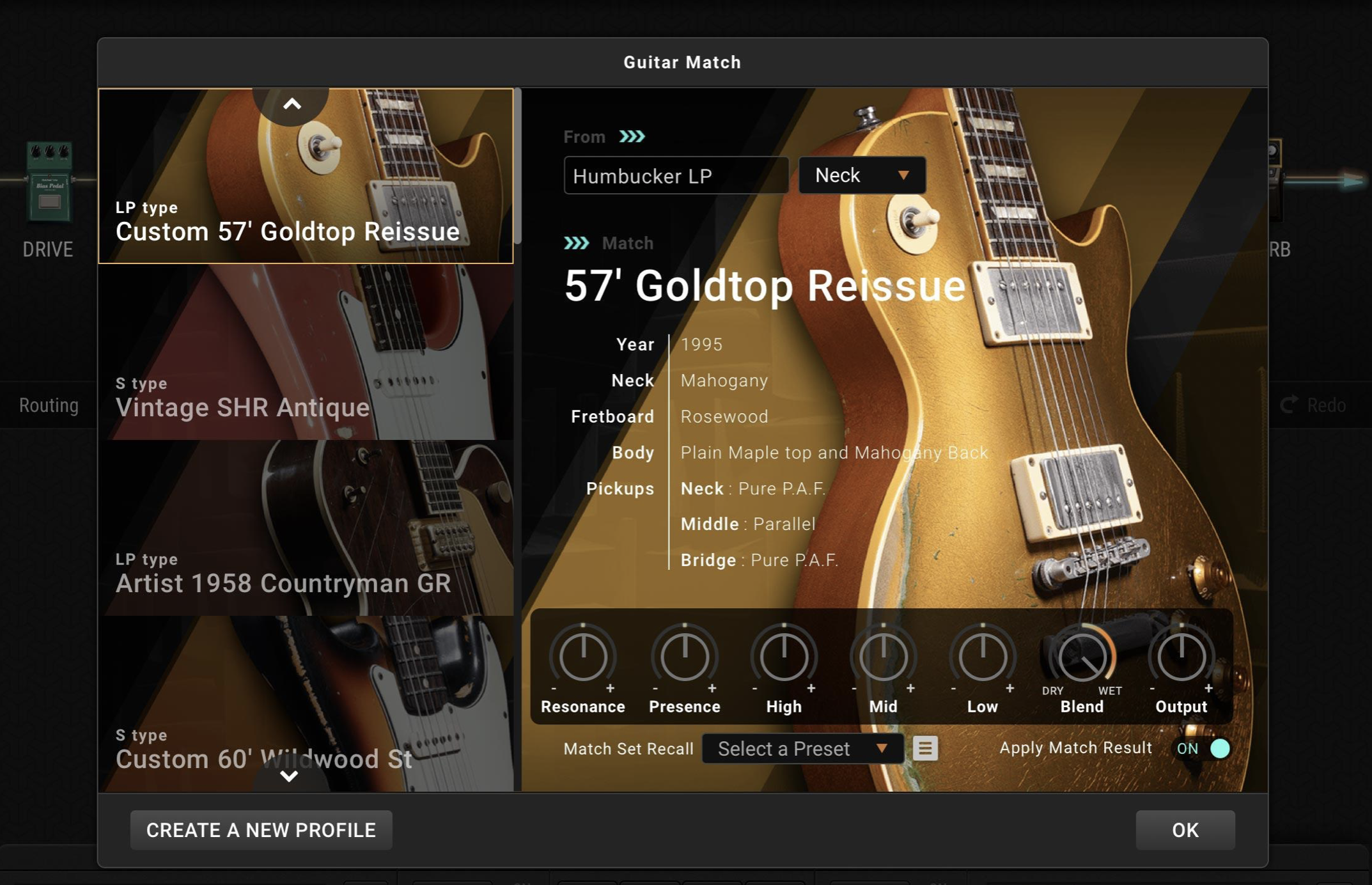
In terms of usability, BIAS FX in particular has an incredibly intuitive interface, letting you easily drag and drop gear into a virtual signal chain. You can even save different pedalboard ‘scenes’ that can be switched with just a click; working much like a pedal switching system that turns off/on several pedals at the same time.
BIAS also has flexible MIDI support for making instantaneous mix changes. It can automate parameter tweaks too, like settings on a virtual pedal, for example. This functionality makes BIAS FX a very powerful live performance tool, and is not strictly a studio-only piece of software.
Native Instruments Guitar Rig
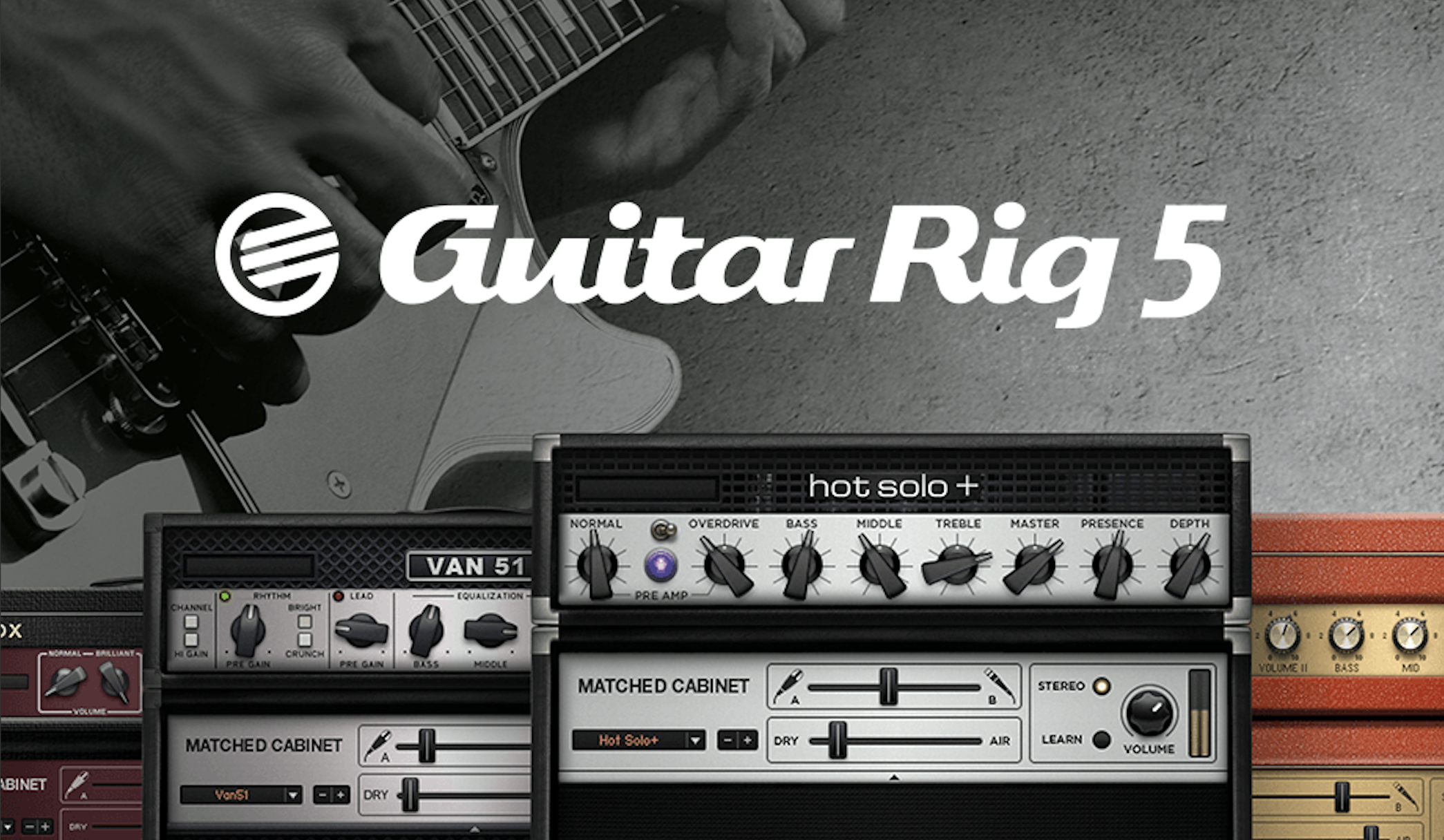
Native Instruments‘ Guitar Rig is another popular and longstanding plugin, first unveiled in 2004. Now in its 5th version, Guitar Rig remains a key part of NI’s acclaimed Komplete software package that offers musicians an entire virtual instrument suite.
Guitar Rig has a smaller library of amp, cabinet and pedal emulations compared to the previous two products. However, it is still highly-regarded as one of the best and most authentic-sounding guitar plugins around. With a modular system interface that resembles a typical guitar rack, its basic layout is perhaps less intimidating and confusing than say, BIAS, may seem.
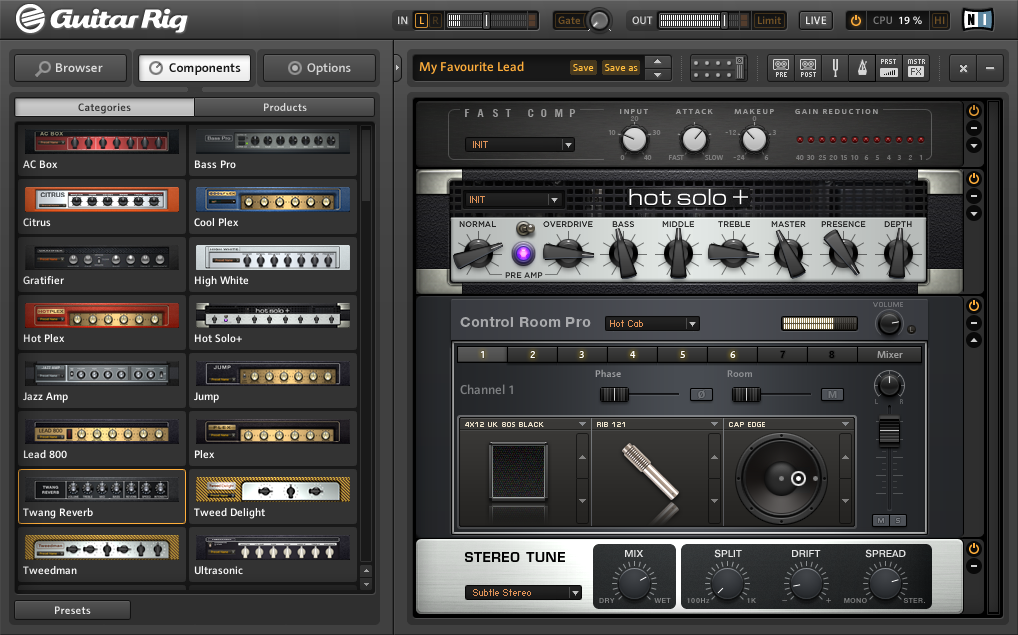
Guitar Rig is therefore more suited for players that are looking for great tones out of the box, rather than ones that can be sculpted to the umpteenth degree. The ‘Control Room’ feature, however, does let you configure precise microphone setups for your amp, cab and effects rig. You can play around with microphone positioning and form sophisticated multi-mic arrangements, for achieving unique, personalised sounds.
Pros of Guitar Plugins
- They let you record with just an audio interface and a computer. It’s therefore very easy to just plug your guitar in and be creative. No time is wasted on setting up microphones, and hiring a studio space isn’t necessary.
- You can have an entire library of guitar sounds stored on your computer, and patches can easily be crafted and recalled at any time.
- Plugins sound good and consistent at any volume, unlike valve amps that typically sound their best when cranked up.
- Compared to real amps, guitar plugins are relatively affordable and infinitely more versatile.
- In a full song mix, many people cannot tell the difference between real amps and emulated ones.
- There’s more room for experimentation with guitar plugins. You can choose from a variety of different virtual amps, cabs and pedals and form unusual combinations for unique sounds.
- You can easily re-order elements in a virtual signal chain. A physical rig would take much longer to re-arrange and organise.
- Post-production is also much easier with plugins, as you can adjust EQ settings or add emulated pedals without having to re-record like you would with a real amp.
- You can share and download patches via online communities and forums.
- Guitar plugins don’t require maintenance. Real valve amps, for example, will need their tubes changed every couple of years.
- They are only going to get better over time, with regular software updates and brand support.
- You can buy add-on expansion packs for some titles, broadening the selection of amp, cab and pedal models available.
Cons of Guitar Plugins
- Don’t always sound as realistic as real tube amps. If “feel” is important to you, meaning the way that a tube amp reacts to your playing dynamics and instrument’s controls, virtual plug-ins probably won’t cut it.
- You can’t generally use real pedals in conjunction with guitar amp VST plugins. Stompboxes plugged directly into audio interfaces don’t sound particularly good.
- Although there are some packages that include dozens of amp models, fans of more niche amps will struggle to find emulations for them.
- Not all guitar VST plugins are advanced enough to emulate room sounds, which is something that can be achieved by recording real amps in studio environments.
- Latency can potentially be a big issue when playing guitar through your computer. Make sure that you purchase a high-quality audio interface (particularly with a Thunderbolt connector) to prevent latency, and also ensure that your computer has a fast processor.
Conclusion
As we know, amps can be cumbersome, loud and expensive. Guitar plugins, on the other hand, are versatile and affordable pieces of software that offer tonnes of different amp, cab and stompbox emulations. Frankly, there’s more functionality than ever before in these all-encompassing pieces of software! So if you’re a guitarist that loves to experiment with different tones for recording, there’s never been an easier of attaining them. Gone are the pricey days of hiring studios!
Of course, some guitarists adore the organic feel and sound of analogue valve amps, which we completely understand. They still serve a great purpose for live performance, and if you can afford a brilliant amp then recording with it makes a lot of sense; especially if it has your “sound”. There’s a time and a place for both options, but if you’ve never used guitar plugins before then we’d definitely recommend taking the plunge into the virtual world.
Want to learn more?
Interested in finding out more about music gear and expanding your knowledge? Click here to view all of our Learn articles!



Responses & Questions